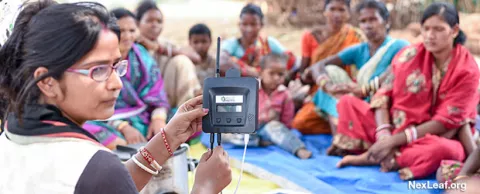
Dirty air has consequences — very serious consequences ranging from climate change to lung disease. In villages in India, clean-burning stoves are one key solution. The problem has been getting people to use them.
Below, read about an innovative solution involving Qualcomm, one of our Global Lead Partners. Using a combination of sensors and incentives, the StoveTrace project is making a difference. Households are now able to afford the stoves and even more importantly, they are using them.
It’s a great example of how creative thinking can prompt the behavior changes necessary to benefit the community — and the planet! — Kevin Ebi
Black carbon may be responsible for 20% of global warming and the rapid shrinkage of glaciers on the Tibetan plateau. Old, smoke-belching stoves in Indian villages aren’t the only source of black carbon, of course, but they are a significant source.
Beyond the environmental impact, they are a significant health problem as well. Exposure to the smoke from fires burning inside homes kills more people than malaria, TB, and HIV/AIDS combined.
More than 80 million clean stoves were distributed in the first part of this decade, but until the StoveTrace project, there was no way to know how many — if any — were being used. Under the StoveTrace project, several hundred households have the clean stoves — and they’re using them.
How StoveTrace works
The StoveTrace program has three parts. First, the program finances the clean stoves, allowing them to buy them with installment payments. They cost about $80.
Special thermal resistant heat sensors track when the stoves are used, keeping a log that can be retrieved by program staff over a Bluetooth connection (earlier versions used more expensive cellular data).
Using mobile payments, households that use the stoves are paid climate credits that, depending on usage, can amount to about $4 per month. This allows them to pay off the stove in less than two years.
Once the stoves are paid off, the monthly payments become income.
Deriving extra value from analytics
The usage data shows the incentives are clearly working. Before the program launched with analytics and incentives, the improved cook stoves were used only about 10 minutes per day. Households participating in the program use their clean stoves about 138 minutes per day.
But it’s not just about stove usage. The analytics also allow program managers to identify homes that may have broken stoves, dispatching technicians to quickly fix any problems.
The analytics also allow them to see if there are issues with usage that could be resolved through better instructions or training. Managers can also track usage by area or demographic groups, allowing them to concentrate on areas that are likely to deliver the strongest results.



